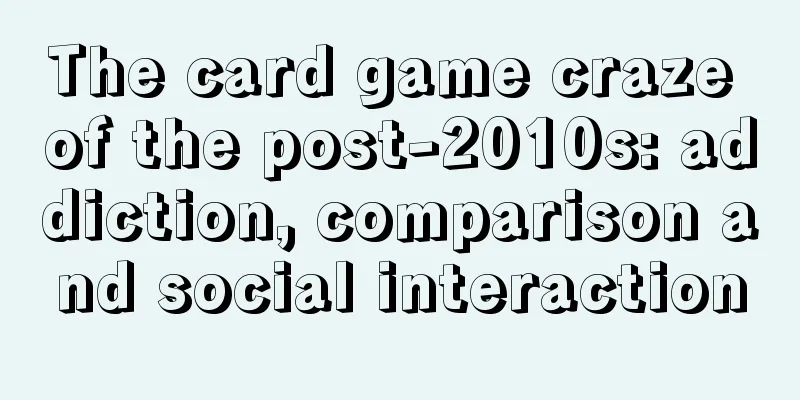What should traditional brands do in 2023?

If you observe the retail formats downstairs in your neighborhood, you should be able to intuitively perceive the following two things: First, more and more vertical category stores have emerged. For example, Qiandama mainly sells meat, Guoquan mainly sells hot pot ingredients, Mixue Bingcheng sells low-priced milk tea, Shuyi Shaoxiancao mainly sells Shaoxiancao... Various restaurants have found their own vertical category positioning, including brands selling pickled fish, dumplings, spicy hot pot, and Shengjian... It is precisely because of the emergence of these vertical category stores that the customer flow of comprehensive supermarkets is being ruthlessly divided - people are more willing to go to specialty stores to achieve purposeful consumption, rather than looking for the categories they need in large and comprehensive department stores. You may have noticed that fewer and fewer people have been going to supermarkets/department stores in the past two years. This is actually an opportunity for vertical brands. On the one hand, the market capacity of a large number of vertical categories has expanded with the upgrading of consumption, which can support the branding of vertical categories. Even in the livelihood category of rice, flour, grain and oil, which is extremely difficult to achieve product differentiation, there are vertical brands such as October Rice Field, which focuses on "Wuchang Rice". Branded consumption will undoubtedly become the main line of future consumption. On the other hand, as the public's awareness of vertical brands increases, they can gradually "go off the shelves", gradually break free from the constraints of channel merchants (supermarkets), and form independent store formats. "Going off the shelves" is similar to the "exit of Taobao" of Taobao brands in the e-commerce industry, and is also an important sign of the formation of corporate brand value. In short, the categories of comprehensive supermarkets/department stores in the past have been continuously separated into independent vertical stores, the categories of catering stores have even been divided more finely, and vertical category brands have emerged in an explosive manner. Second, the product lines of vertical category stores are constantly being enriched and expanded. Stores are resources. To maximize store benefits, companies always have the urge to enrich the SKUs on sale. The convenience store downstairs has begun to become like a small supermarket. Meituan Shopping is no longer just about buying vegetables. Guoquan, which specializes in hot pot ingredients, has begun to sell pre-prepared dishes. A restaurant brand that specializes in spicy hot pot has begun to sell braised food in the lobby. A brand that specializes in grass jelly has also started to sell milk tea... These vertical brands quickly achieved horizontal expansion of their product lines, which also resulted in a large amount of product competition between brands. For these brands, on the one hand, the expansion of SKUs can help them run the store business model more effectively to achieve large-scale replication; on the other hand, it also continuously maximizes the value of traffic and expands the brand's imagination space. Therefore, behind the seemingly orderly vertical development of categories is actually a borderless melee. Each independent store seems to have a trend of returning to a "supermarket", and the products of each independent store are actually competing with each other. Although the above description is about the current development trend of community retail, the logic is the same for the entire consumer market. The consumer market has the dual attributes of "category refinement" and "product melee". Not only are there new consumer brands constantly breaking through from vertical categories and grabbing vertical market share from mature brands; at the same time, these new consumer brands often expand their product categories rapidly, integrating their brand value into more diversified product lines, and achieving differentiated competition against mature companies. Not to mention the examples of star brands such as lululemon and Yuanqi Forest, popular dark horse brands such as Jiaoxia and Neiwai all have the same brand growth path. For traditional large brands, facing the market invasion of new brands is like a regular army facing a guerrilla force. It seems to be powerful, but in fact it is passive everywhere. This is also the anxiety of traditional brands. Why are powerful traditional brands always one step behind in the new consumption wave? Many people explain this as traditional enterprises are not sensitive to the changes in the needs of new consumer groups, are slow to realize the marketing trend, and have a conservative management style, thus missing the opportunity to capture new consumer needs. On the contrary, emerging company teams that are more flexible and less burdened can not only keenly capture changes in user needs, but also ALL IN new marketing methods to achieve exponential growth. This explanation was convincing in the past few years, but now consumption upgrading is no longer a new concept, but an obvious trend that has been advancing for several years. It is obviously not common sense to say that large companies still ignore new consumer groups and new consumer demands. However, we still find that a large number of traditional companies still do not have very impressive performances. Traditional companies seem to be passive in the face of the "guerrilla warfare" of emerging brands, and their market share is constantly eroded by more vertical companies. But in fact, they obviously have advantages that emerging brands do not have. This is the solution to the so-called "brand renewal" and "brand rejuvenation" today. 1. Brand positioning role transformationWe believe that one of the main reasons for the passiveness of traditional brands is that companies have a rigid understanding of "brand", which has led to traditional companies fighting a long-term battle in the product dimension and being attacked from all sides. In fact, with the upgrading of consumption and the rise of new consumption, the connotation and logic of "brand" are also being driven to change. In the past, the emergence of brands was to give people standardized product expectations, thus reducing the cost of people's consumption decisions. For example, no matter where you see Coca-Cola in the world, you can have a psychological expectation of its products, and you will feel more confident in consuming Coca-Cola compared to unknown small local brands. It can be said that in the past fast-moving consumer goods industry, the role of brands was to promote users’ decision-making behavior when they entered the shelf scene. Brands meant a quality standard and a “credential” that promoted users’ consumption decisions. It is worth mentioning that even in the past, brand awareness alone obviously could not constitute a brand, and this was also a misunderstanding of brands by many entrepreneurs in the past. Merely having brand awareness does not actually constitute a consumer decision. Users will not only pay for brands they have heard of, but for the product quality standards that the brand carries. But now, the connotation of the brand has actually shifted. If the connotation of the brand in the past was based on the product perspective, then in the new consumer era, brand building needs to be based on professional service capabilities and become a kind of "professional consultant" for consumers. The essential logic behind this is to be guided by the "multi-homogeneous" needs of users. "Diversification and homogeneity" is a word we coined. On the one hand, users' demands for a specific brand are homogeneous. For example, consumers' demand for Blue Moon is to achieve clean washing and care. But on the other hand, users will derive diversified scenarios under this demand. For example, different clothing needs and different fabric materials have different washing and care needs. In this case, users’ demand for brands is not limited to the product itself, but a kind of professional service capability. The role of the brand should be a consultant or assistant to the user in a certain field, providing a solution for the user’s “multiple homogeneous” needs, which is actually the advantage of traditional enterprises. For example, for Blue Moon, its brand value does not lie in the quality standards of its products, but in its professional service capabilities for cleaning clothes. In this way, when users face relevant scenarios and encounter relevant problems, they will think of the Blue Moon brand. It can be found that the product itself is only a manifestation of a solution to user needs. What users need from companies and brands is a professional service capability that can solve the "diversity and homogeneity" problem they face. Obviously, users will not become experts in every field, but with the advancement of consumption upgrading, user needs are moving towards personalization. Personalized needs inevitably require customized solutions. The gap between personalized needs and the professional capabilities required for customized solutions is what future brands need to fill. 2. Establish an efficient service systemAs analyzed above, what brands deliver in the future is not limited to the product itself, but should be a professional solution capability, so that users can form a longer-term stickiness with the brand. However, in addition to requiring brands to make a cognitive shift to "expertization" in their role positioning, companies also need to make corresponding changes in their organizations and marketing networks. In the past, a large number of companies were actually unable to connect directly with consumers, and instead reached and interacted with users through a network of distributors and agents. This disconnect between brands and users objectively led to brands focusing on the delivery of tangible products, making it difficult to provide in-depth user services. This is also an important reason why a large number of brands have transformed to DTC (direct to consumer) in recent years. The importance of DTC lies not only in connecting directly to consumers and eliminating middle links, but also in building private traffic pools and reducing user activation and conversion costs. It is also that only through the transformation to DTC can brands achieve rapid response of services and provide users with professional solutions, rather than just standardized products themselves. For example, under the DTC model, brands can provide solutions and product recommendations based on users’ personalized needs. In this way, product sales are not the goal but the result. We can actually find that in the brand's private traffic pool, a large number of user consumption demands are stimulated. Ordinary users are relatively confused and ignorant when faced with product consumption choices. At this time, the guidance and suggestions of brand service personnel are particularly important and play a key role in promoting conversion rates. Under the DTC model, brands can also form user communities and provide more abundant user operation services based on the derivative needs of users. The deep connection and stickiness between brands and users will become the ultimate moat of brands. For example, a large number of automobile brand manufacturers have begun to build their own apps to achieve direct user connections. In addition to user services and product intelligent functions, apps also have a large number of activity operations and community operations, which help build multi-dimensional links between brands and users, and form user stickiness and loyalty in the process of continuous brand interaction. Looking back at the business history, we can also find that most of the consumer brands that collapsed did not form deep, two-way interactions with users, but only delivered products. In fact, from the moment the user pays, the deep connection between the brand and the user and the building of brand stickiness have just begun, not just ended. It is not difficult to find that, whether in terms of resource investment or accumulation of professional capabilities, traditional large enterprises actually have more advantages in serving direct users than emerging brands. In the direct interaction between brands and users, brand service personnel are particularly important because their behavior determines the user's professional service experience. But the problem is that most brands' end-user operations and private traffic pool operations are only executives or sales personnel, lacking certain professional solution capabilities. This requires companies to establish a professional structured knowledge base internally and provide more systematic personnel training, using the company's years of accumulated professional knowledge and capabilities to professionally empower the entire terminal personnel. In short, from product delivery to solution delivery, this also means that brands need to make the leap from the "secondary industry" to the "tertiary industry", which will inevitably bring about changes in organizational structure and organizational collaboration. 3. Explore new organizational structuresIn the long run, a company's competitiveness ultimately comes from its organizational capabilities. In an efficient organization, outstanding talents can leverage their expertise and enhance the company's competitiveness. As mentioned above, the various changes in consumption upgrades, media environment, and user touchpoints require adaptive changes in corporate organizations. If the marketing system and operation system are not supported by the corresponding organizational structure and processes, the final effect will only be half the result with twice the effort. Here we try to give two examples of organizational structure changes that Communication Gymnastics has observed in the past two years. The first is the reduction of power of the brand department and the promotion of power of the business department. In the early years, the brand department of the headquarters of fast-moving consumer goods companies played a leading role and could largely determine the marketing direction of the company. Brand marketing could also indirectly reflect business performance. It can be said that during this period, the brand department had a certain degree of overall planning ability and was often able to guide business development. The business department often asked the brand department for resources. However, with the rise of e-commerce and other channels, new departments such as e-commerce operations have emerged and are responsible for performance. Coupled with the fragmentation of media and channels, the failure of traditional brand marketing, and the general trend of reducing costs and increasing efficiency, the coordinating role of the brand department in many companies has actually ceased to exist. Today, the brand department of many companies is more like an enabling department, no longer holding the initiative in business development, but only carrying out brand communication in the marketing and promotion activities of various business departments. When we communicate with many companies and agents, we can find that the brand department’s voice has been reduced and its budget has been cut. We do not think that this is due to the company’s lack of attention to the brand department, but rather a change in the role of the brand department in the company’s business management. Today is no longer the era in the past when traditional brand marketing can be used to achieve brand awareness and spread brand value. Obviously, today's communication and channel environment are more complex, and all marketing work cannot be undertaken by a single brand department. Therefore, part of the functions of the brand department will actually be split into various business departments. The company's organizational structure will naturally have to be adjusted, and the roles of the company's brand and marketing departments will naturally change and find new positions in the organization. The second is the decline of the middle office and the independence of the business units. In the past few years, the entire organizational structure of enterprises has been popular with the "big middle office and small front office" model. This move is to empower business units with the company's general capabilities such as R&D and marketing more efficiently, so as to avoid the phenomenon of reinventing the wheel and interest consolidation in various business lines, thereby improving the efficiency of the enterprise. There are many discussions about the issue of the middle platform among enterprises online. The digital transformation of traditional enterprises actually requires enterprises to build a data middle platform, but we will only talk about the issue of the middle platform here. The original intention of the middle platform is to improve efficiency, but a large number of innovative products and businesses are usually grown outside the middle platform. Consumption upgrades actually require companies to carry out a large number of product, service, and business innovations. The middle platform model is prone to appear inefficient at the innovation level. Therefore, the industry often debates whether to "make the middle platform bigger" or "make the middle platform smaller", whether to "single middle platform" or "multiple middle platforms", and so on. Productivity and production relations are mutually influential and mutually compatible. With the development of enterprises and changes in the external environment, especially after the overall disappearance of the demographic dividend, more and more enterprises pay more attention to the independent profitability of their businesses, and promote the entire organizational structure to reduce costs and increase efficiency in the "post-demographic dividend era". We have found that more and more companies have begun to operate business units and divisions independently and are responsible for their own profit and loss settlement. In fact, the management ideas behind this mostly come from Kazuo Inamori's Amoeba business model. But then again, when it comes to choosing a suitable organizational management system, the problems faced by each company and the corresponding solutions are different. Organizational structure and management are actually the know-how of the company itself and are one of its core competitive advantages. In short, traditional enterprises are relatively passive in the new consumption wave, but they have their own core advantages. Formulating corresponding strategies for brand positioning, user services, and organizational management based on their core advantages will strengthen their own corporate competitiveness. The direction of change for traditional enterprises is by no means to blindly please young people and achieve the so-called "brand rejuvenation", but to carry out a comprehensive brand and organizational change. Author: Source: WeChat public account "Spread Gymnastics (ID: chuanboticao)" |
<<: Writing copy? The informal kind
>>: Repetition is the most effective way to bring goods to Douyin
Recommend
How many sites does eBay have around the world? How to use eBay in China?
eBay is the world's leading cross-border e-com...
Is Amazon's payment cycle fixed? When will the payment be returned?
Merchants who have done e-commerce know that the p...
3.82 million people online in 5 minutes, is Liu Qiangdong's AI clone the antidote to JD Live?
Recently, JD.com founder Liu Qiangdong's AI di...
My observations on the recent developments of WeChat Video Account
As a platform backed by the WeChat ecosystem, the ...
ByteDance has created a new Douyin search app, but is it actually a Xiaohongshu?
In the competition among Internet giants, ByteDanc...
Does off-site traffic from Amazon affect rankings? Why?
If Amazon stores want to generate more revenue, th...
What is Shopbop's delivery method? What are the methods?
Everyone should know Shopbop. It is a cross-border...
How to operate community content? Tiantian Fund has the answer!
In community operations, content production is a n...
What are the advantages of Shopee Thailand? Four major advantages
As a cross-border e-commerce platform, Shopee has ...
How do you play the local life services that platforms must compete for?
Meituan’s adjustments have caused major brands to ...
What should I do if Amazon ACOS is getting higher and higher? How can I reduce it?
After opening a store on Amazon, merchants will de...
What products have a low return rate on Shopee? How to facilitate transactions?
Everyone can see how popular Shopee is nowadays, s...
How to close the account if the Amazon store is frozen? Do I need to apply?
After an Amazon store opens, it must follow the pl...
The short drama that has attracted 500 million people is the new traffic code for brands
This article delves into how the short drama marke...
Is DHgate.com a legitimate company? What are the benefits?
Among the many cross-border e-commerce platforms, ...









